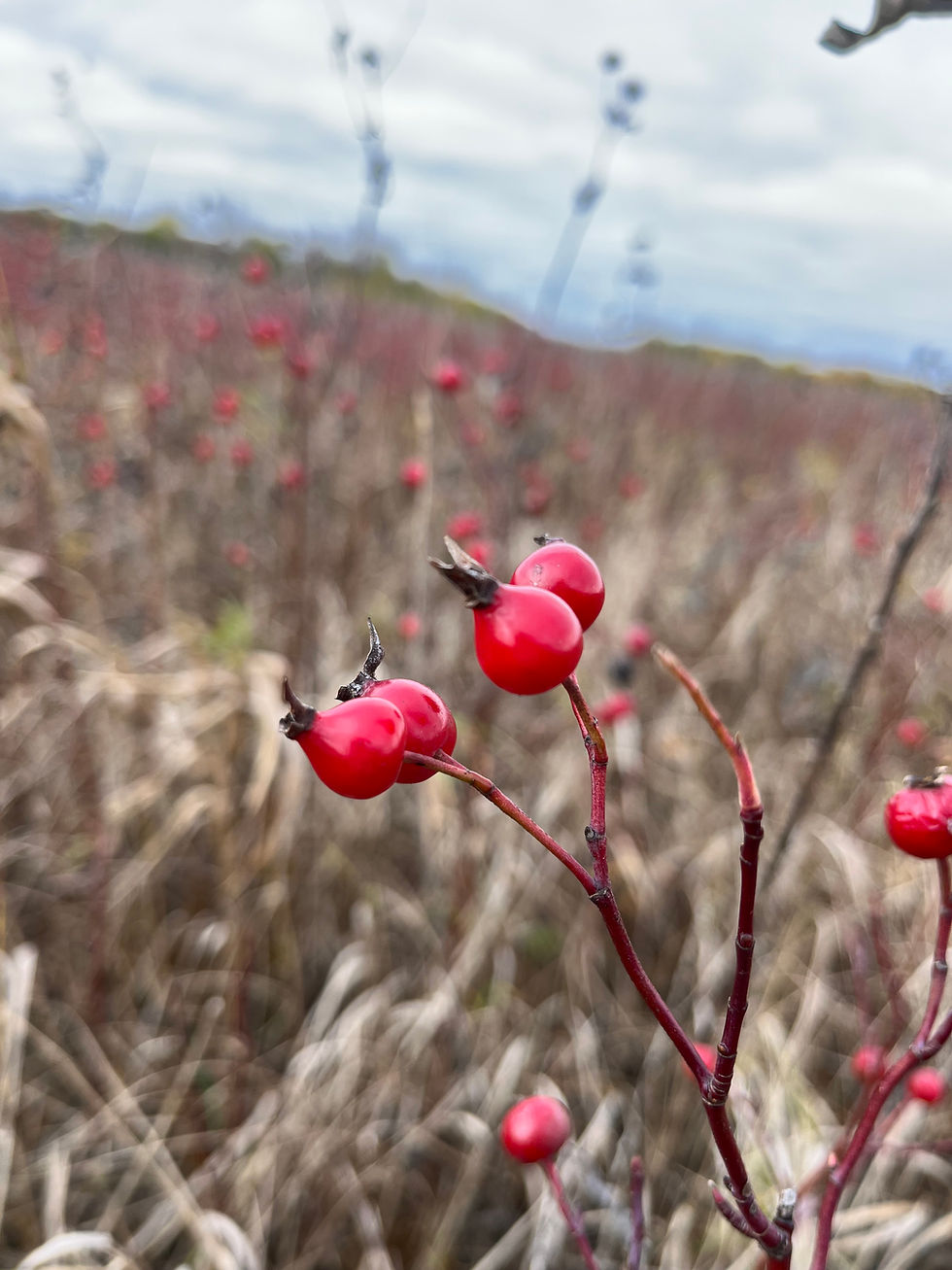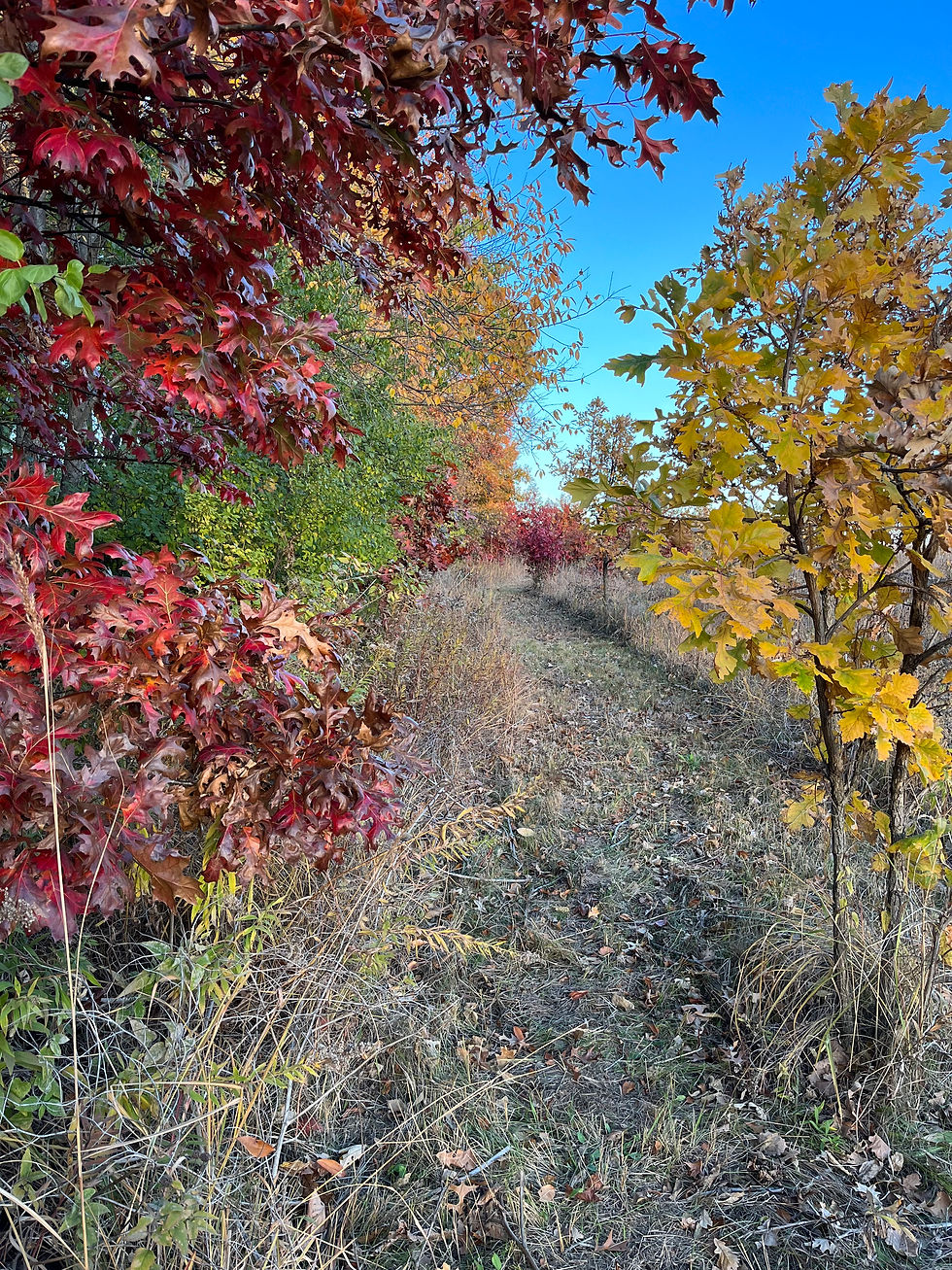October 21, 2023
- Sarah
- Oct 22, 2023
- 2 min read
Updated: Oct 23, 2023
From a distance, the prairie looks like a sea of golden-brown grass. Once you spend a little time walking through it, you start to notice an overwhelming abundance of unique species. This morning, I focused on gentians. Every Saturday in the fall, small groups of volunteers gather for seed-collecting, and I was excited to join them.
I started by collecting cream gentian (Gentiana alba). Hardly any of their cream color remained, leaving only the light brown, papery seed heads. These are the first of the gentians to bloom in late summer, with creamy-white flowers and olive leaves that clasp the stem. I look forward to returning to this patch of prairie to see them blooming next year.
Once I filled two buckets with cream gentian seed heads, I moved on to stiff gentian (Gentianella quinquefolia). Stiff gentian grows lower to the ground, and the flowers resemble light purple jewels scattered below the taller prairie plants. Many of these were still blooming, so we searched for the blackened clusters that had opened to release their seeds. The open seed heads look like the mouths of baby birds, calling for the wind to tip them and spread their seeds across the prairie.
The final gentian I collected was fringed gentian (Gentianopsis crinita). We went to a marshy area to collect this species, which prefers wetter soils. These flowers remain closed on cloudier days and open to the sunshine to reveal the delicately fringed edges of their petals.
Bumblebees are the primary pollinators of cream gentian, bottle gentian, and stiff gentian, since their flowers remain mostly closed and leave little room for other insects to access their pollen. Bumblebees are strong enough to pry open the tops of flowers and crawl inside. I hope to find a bee emerging from a bottle gentian next summer.
There aren’t many bees left in the prairie as the temperatures drop, so I was happy to stumble upon this bumblebee on a New England aster. New England asters vary from pale pink to a bright purple and appear particularly bold against the golden backdrop of fall foliage. Species like New England aster that bloom later in the year are important for supporting pollinators.
With freezing temperatures approaching quickly, I will make the most of these beautiful fall days and seek out the last colorful blooms.

























Comments